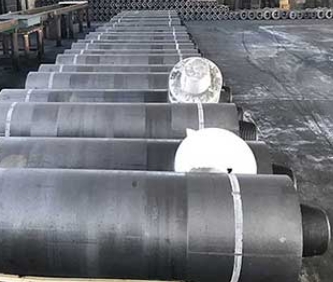
Graphite electrodes are the workhorses in electric arc furnaces. They are used to convert electrical power into heat for melting scrap metals, and creating new steel products. The quality and productivity of EAF refining and smelting processes are directly affected by the electrodes. These electrodes can be made using electrode paste. It was shown that a good chemical pretreatment increased the electron transfer of redox processes at the surface of the electrode graphite.
The electrode paste is typically made from anthracite or nitrate coke electrically calcined as the raw material, and coal asphalt used as a bonding agent. This mixture is then kneaded and pressed, followed by roasting to produce a semi-finished electrode. Further characterizations and modifications of the electrode are done before it is used in production.

The most widely used commercially accessible graphite rod is needle coke based, pyrolytic-graphite felt (PGE), after it has been impregnated with a melamine-based polymer and roasted multiple times to reduce the porosity. In the manufacturing of electrodes, a resin-based epoxy adhesive was used. This has been replaced now by a melamine polymer.
Pyrolytic graphite containing a high amount of boron makes an excellent raw material to produce electrode pastes. It is characterized by a high level of thermal stability, good conductivity electrically and a low content of ash. It is also easily machineable, easy cleaning and has a strong chemical resistance.
Refractory carbon is also a widely used electrode. This material can be produced by reductively converting petroleum coke. Steel plants use it for melting, smelting, and refining. Refractory char has a small specific gravity and low thermal expansion. It is also electrically conductive and has good thermal stability. It has been shown to be highly resistant to acid attacks and capable of withstanding temperatures up to 3,000 degC.
Stevens and Dahn reported the reversible electrochemical insertion/extraction (of Na) into and from hard carbon in Na cells for the first time in 2000. They demonstrated that hard-carbon exhibits comparable reversible capacity as that of graphite, without the staging transition of graphite. It is a good alternative to the traditional graphite cathodes used in Li-ion battery.
Rongxing's technical team is highly qualified and has extensive experience in the areas of raw materials analysis, production supervision, machining, and application. We are committed to providing our customers with high-quality products and service. Our after sales service is characterized as quick response and efficient support with high professionalism. Rongxing is an organization with a philosophy of "being loyalty to customer" deeply embedded in its culture. With the help of our service and products, we aim to help our clients achieve a significant competitive advantage. We are looking forward to a lasting relationship with our customer. We will continue working on our technology, service and believe that together, we can create a prosperous future.

Write a Message